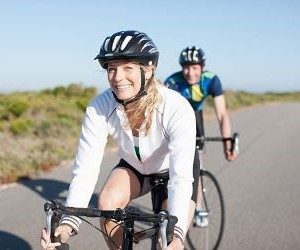HOW DO I HANDICAP UCI WORLDS INDIVIDUAL TIME TRIALS DIFFERENTLY FROM ROAD RACES?
At the UCI World Championships, individual time trials (ITTs) and road races require completely different approaches for bettors, analysts, and cycling fans alike. While both test rider performance, the demands, conditions, and outcomes are shaped by entirely different dynamics. This guide breaks down how to properly handicap time trials versus road races—covering course profiles, pacing patterns, rider strengths, team impact, weather variability, and betting market behavior. Whether you’re wagering or just watching, a smarter read begins with knowing what sets these formats apart.

Understanding core differences between ITTs and road races
To handicap these events accurately, you need to understand their structural and strategic differences. ITTs are pure solo efforts—no drafting, no teamwork, no attacks. Road races are group-based, tactical, and often chaotic. Each demands unique physiological and psychological tools from the rider, which affects outcomes and market value.
Time trial vs. road race – Key distinctions
Format: ITTs are solo start-to-finish efforts; road races involve pelotons, breakaways, and group dynamics.
Team role: In TTs, riders are fully independent. In road races, domestiques and team leaders matter enormously.
Equipment: TTs use aero bikes and skinsuits; road races use traditional setups with more flexibility.
Course strategy: TTs are about pacing and power distribution; road races depend on timing attacks, energy conservation, and positioning.
Betting volatility: ITTs are more predictable due to fewer variables; road races offer higher-value underdogs due to chaos.
These distinctions shape everything—from who’s favored to how weather matters. Understanding the foundation is step one to adjusting your handicapping lens.
Key metrics to evaluate in ITTs vs. road races
Time trials reward specialists who can produce consistent high watts over 30–60 minutes with surgical pacing. Road races, by contrast, reward opportunists—those who can read the race, respond to surges, or launch well-timed attacks. Your handicapping model should reflect this split in physiology and tactics.
Metrics that matter for time trials
FTP (Functional Threshold Power): Best predictor of sustained effort capacity. Look for riders with top-tier watt/kg over 40–60 minutes.
Aero efficiency: Riders with optimized positions, gear, and wind tunnel-tested setups consistently outperform raw power rivals.
Pacing history: Analyze past time trial splits. Riders who fade or misjudge effort pacing are high risk in TTs.
TT record in similar profiles: Flat vs. hilly TTs require different strengths. Match rider physiology to course demand.
Start order and weather: Changes in wind or rain can skew times dramatically—early or late start slots matter more than most think.
Metrics that matter for road races
Race IQ: Look at riders who have proven timing and decision-making in chaotic finales or breakaways.
Team support: Strong national teams (Belgium, Italy, Netherlands) impact lead-out, chase, and protection strategies.
Finishing kick: Even on punchy finishes, riders with explosive sprints from small groups are favored.
Weather resistance: Rain, crosswinds, or heat affect attrition and race style. Look for resilient all-rounders.
Course attrition profile: Road races with multiple climbs or cobbled sectors increase the chance of elite climbers or puncheurs winning.
While ITTs are about predictable physiology, road races lean heavily on tactics, weather, and group dynamics. The sharp handicapper knows when to trust numbers—and when to fade them for chaos potential.
Market behavior and betting edge opportunities
Markets treat ITTs and road races differently—and so should you. Time trial odds are often shaped by past TT results and wattage data, while road race markets tend to inflate the value of big names, overlooking tactical dark horses. That creates distinct edge windows for each race type.
Time trial betting angles
Undervalued aero riders: Some strong TT riders aren’t marquee names but post top-10s consistently due to efficient setups. Look beyond the stars.
Flat vs. technical courses: Some riders excel on power-heavy courses, while others perform better in tech-heavy, cornering routes. Analyze course maps closely.
Start time/weather hedging: If storms or winds are forecast mid-session, consider early starters as value picks, even at long odds.
Head-to-heads: This is where sharp bettors clean up in ITTs. Look for mispriced matchups where historical TT data clearly favors the underdog.
Road race betting angles
Overvalued sprinters: If the course is hilly or windy, avoid backing pure sprinters—even if they’re crowd favorites. Breaks or puncheurs often win.
Team tactics: Riders with strong domestique support often outperform odds, especially in long attrition races where chasing is needed.
Late-stage attackers: Look for riders with a history of surviving late climbs and making small group moves—often mispriced in outright odds.
Weather dark horses: Riders who thrive in rain or cold may have an edge the market undervalues if bad weather rolls in.
In short, treat ITTs like math problems and road races like poker games. The former favors data-driven bets; the latter rewards tactical analysis and chaos prediction. Adjust your model accordingly.






